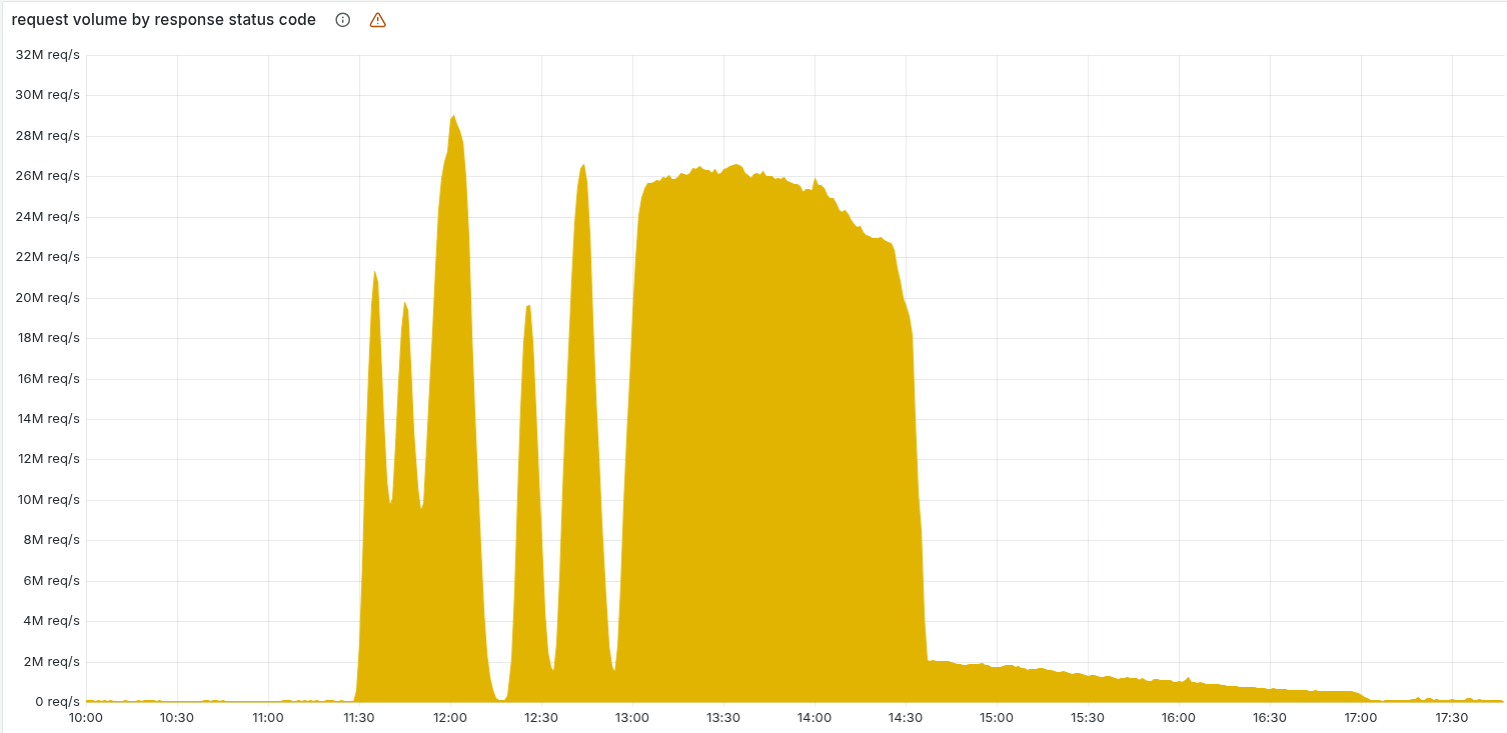The latest Cloudflare failure caused widespread disruption across cryptocurrency applications and demonstrated the sector’s heavy reliance on centralized internet infrastructure. The incident, Cloudflare’s worst service interruption since 2019, exposed a major contradiction within the cryptocurrency industry’s claims of decentralization and resilience.
This outage has raised difficult questions: Can true decentralization exist if a single provider is able to bring down a large portion of an industry?
Scale and causes of Cloudflare outages
The outage began at 11:20 UTC on November 18th after a database permission change caused a Cloudflare network outage. In an official incident report, Cloudflare explained that the bot management feature file doubled in size, exceeded memory limits, and caused widespread HTTP 5xx errors.
Key Cloudflare services, including CDN, Security, Worker KV, Access Authentication, and Dashboard Login, experienced a major disruption between approximately 11:20 and 14:30 UTC, and some services were partially mitigated starting at 13:05, but remaining issues persisted into the afternoon. All services were fully restored by 17:06 UTC.
The team confirmed that this incident was not caused by a cyber attack. Instead, it was caused by configuration changes and query behavior that rapidly propagated throughout the system.
“Today was the worst outage for Cloudflare since 2019. We’ve had outages that made our dashboards unavailable. We’ve had outages that made new features unavailable for periods of time. But over the past six years, we’ve never had an outage that stopped a large portion of the core traffic flowing through our network…On behalf of the entire Cloudflare team, I want to apologize for the pain we’ve caused the internet today.” said Matthew, CEO of Cloudflare. Prince writes.

Rapid increase in HTTP 5xx errors during Cloudflare outage. Source: Cloudflare
Cloudflare, whose infrastructure supports a wide range of online services, plays a critical role in directing internet traffic worldwide. In its “2025 Q3 Browser Market Share Report,” the company pointed out that more than 10% of all websites connect via reverse proxy systems.
Additionally, nearly 25 million online venues rely on Cloudflare’s network to reach their audiences. because manBecause online platforms rely heavily on systems, outages and interruptions can have far-reaching effects.
Cryptocurrency decentralization paradox exposed
Notably, when Cloudflare stalled, major exchanges and DeFi protocols went offline at the same time.
Yay! !
Cloudflare’s worldwide network outage has taken multiple crypto frontends offline.
What a mess! ! ! pic.twitter.com/pQPbMhjsXj
— Kyle Chasse / DD🐸 (@Kylechasse) November 18, 2025
The incident quickly drew criticism from industry analysts. They pointed to the gap between the rhetoric of crypto decentralization and the operational reality.
Nader Dabit, director of developer relations at Eigen Labs, explained this irony in a post on X, highlighting that the “unstoppable” app failed when Cloudflare went offline.
An AWS outage brought down your favorite DeFi protocol. Your favorite DeFi protocol is currently down due to the Cloudflare outage. And all oracles value Binance as the first gospel of the crypto Bible. We’re not as decentralized as we’re being told, are we?” Moby Dick added.
This failure reveals that many cryptographic applications rely on centralized networks for critical services. While the blockchain itself can operate independently, users access it through the Web2 infrastructure, which creates weaknesses.
The event also revealed gaps in DeFi risk management. The practical reality of permissionless finance becomes unstable if users are unable to access or transact with their accounts at critical moments, even while on-chain protocols continue to operate.
Nevertheless, not all experts considered this incident an existential threat to Web3. Mert, CEO of Helius Labs, put this obstacle in perspective by noting Cloudflare’s massive scale compared to blockchain’s throughput.
“Cloudflare handles 85 trillion more requests per second than the entire chain’s lifetime combined. Ignore this. It’s like a toddler bragging to the pilot about flying a toy airplane,” Mart said.
This perspective presents future engineering challenges. The blockchain industry values uptime, but few projects handle traffic at the scale that Cloudflare does.
Building a distributed system with similar capabilities is an open question. Currently, Web3 projects typically rely on established, centralized infrastructures due to practical considerations.
But some analysts said the disruption could spur innovation. Blockchain data expert Alex Svanevik noted that the outage could prompt alternative crypto infrastructure solutions.
Cryptocurrency without cloudflare
Who is making this?
— Alex Svanevik 🐧 (@ASvanevik) November 18, 2025
Whether the cryptocurrency sector diversifies or continues to rely on convenience over ideology is a question industry leaders must face as they weigh security and resiliency.
The article Cloudflare outage reveals Web3 centralization issues appeared first on BeInCrypto.


